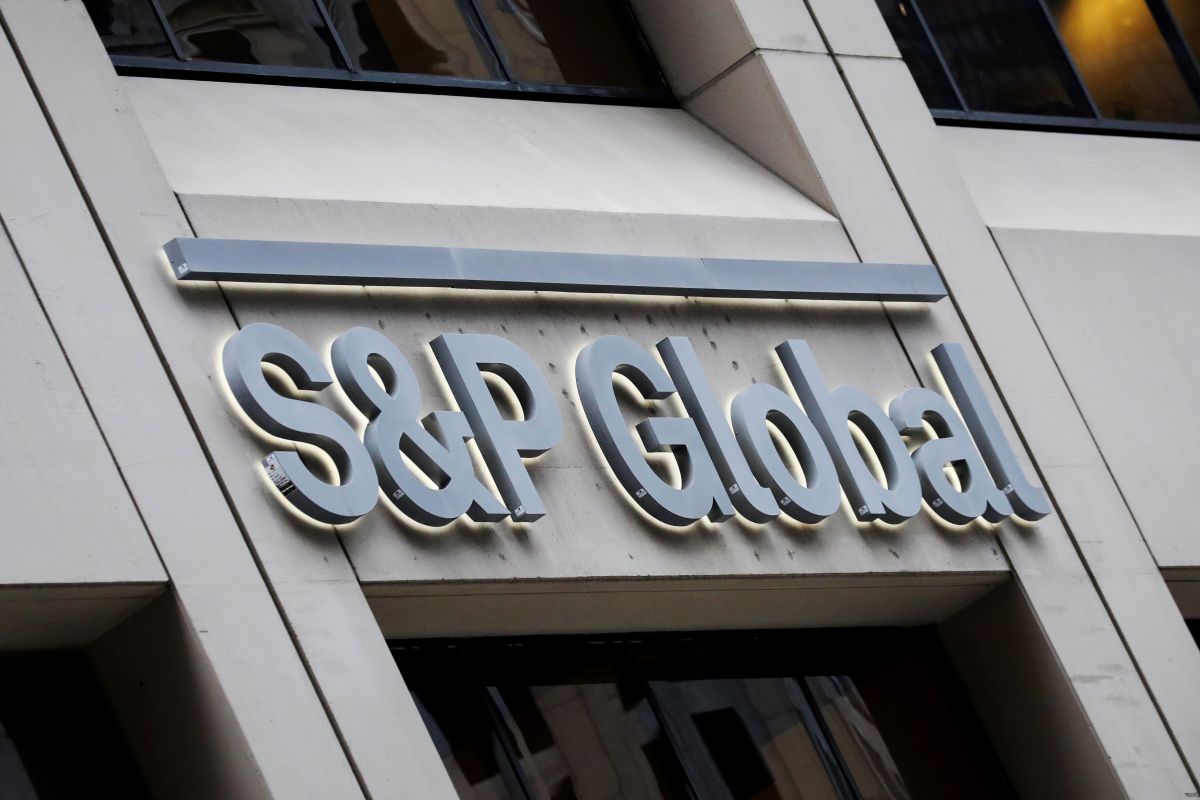Reuters / BRENDAN MCDERMID
KEY POINTS
- Associated, Comerica, Key, UMB and Valley National all received downgrades
- Zions and two regional banks on negative outlook
- Ratings decision is tied to Fed’s quantitative tightening actions since March 2022
S&P Global Ratings cut the credit ratings of five U.S. banks. It’s the second notable downgrade of leading U.S. banks in as many weeks.
In a Monday note, provided to International Business Times by S&P Global Inc. (NYSE: SPGI), the credit ratings provider cut the ratings of five banks, which were already on a “negative outlook:”
It adjusted the following banks to a negative outlook:
It maintained a negative outlook on:
It reaffirmed its ratings and maintained stable outlooks on:
With this ratings action, Associated, a Green Bay, Wisconsin, regional bank serving Wisconsin, Illinois and Minnesota, has now been downgraded twice in August.
In a statement provided to IBT by KeyBank spokesman Matthew Pitts, the Cleveland commercial banking company said it continues to believe its business model, balance sheet and risk management practices will “drive sound profitable growth.”
“While S&P’s view of the macro-economic environment for regional banks played a large part in their decision to downgrade Key’s long-term ratings by a single notch, we were pleased that they updated Key’s outlook to ‘stable,'” the KeyCorp statement said. “This reflects the strength and stability of our diversified deposit base and excellent asset quality.”
According to financial data released by the Federal Reserve in March, the five banks receiving downgrades are among the 50 largest commercial banks in the U.S. in terms total consolidated assets.
Key, Comerica, Valley National, Associated and UMB hold more than $427 billion in assets, according to Fed figures.
Shares of all five downgraded banks endured a notable selloff on Tuesday after news of the ratings action circulated on Monday evening. As of 3 p.m. Eastern Daylight Time, all of the downgraded banks saw their stock price drop between 2% to 4% from Monday’s closing price.
Representatives of Associated, Comerica, UMB and Valley National did not immediately respond to a request for comment from IBT.
The note, authored by a team of S&P Global Ratings credit analysts led by Brendan Browne, the senior director of S&P’s financial institutions ratings group, said the U.S. banking system is operating under tough operating conditions partially caused by the Fed’s continued quantitative tightening measures designed to control inflation. Moreover, exposure to a faltering commercial real estate market, especially in office space, is dragging some banks down.
The S&P note said the 10 banks mentioned in Monday’s report face “potential risks in multiple areas that could make them less resilient than similarly rated peers.”
“Some that have seen greater deterioration in funding — as indicated by sharply higher costs or substantial dependence on wholesale funding and brokered deposits — may also have below-peer profitability, high unrealized losses on their assets, or meaningful exposure to CRE,” the note said.
Additionally, S&P Global Ratings’ economists are now forecasting “slow growth” rather than a U.S. recession.
“The U.S. economy has shown greater-than-anticipated resilience,” the note said. “While inflation remains above target, it has declined from its peaks.
“Our economists believe the Fed is near the end of the rate tightening cycle, upon which it will likely hold rates flat at least through the middle of 2024 — longer than previously expected.”
In July, the Fed’s Federal Open Markets Committee increased the target range of the federal funds rate by .25% to a range of 5.25% to 5.5%. It’s the highest such rate in 22 years.
The FOMC is set to meet again on Sept. 19-20. Members of that committee have said they are not yet ruling out additional rate hikes.
In general, the U.S. banking industry’s funding, liquidity and spread income are suffering due to the Fed’s actions since March 2022, the note said. The value of assets is falling and the odds of asset quality deterioration continue to rise.
“Higher rates are pressuring borrowers, and nonperforming assets, delinquencies, and charge-offs are rising toward at least their historical averages,” the note said. “Amid higher for longer interest rates, we expect further asset quality deterioration.”
A prolonged office exodus and growing acceptance of either remote work or hybrid schedules is pushing down the value of office buildings around the country, too. The S&P note said the banks with the largest exposure to CRE and office loans “could see some of the greatest strains on asset quality.”
Despite these risks, the S&P analysts said they still believe the U.S. banking industry is more stable than it was in spring of this year when Silicon Valley Bank, Signature Bank and First Republic Bank failed.
About 90% of the banks S&P rates continue to have stable outlooks and only 10% have negative outlooks.
“The preponderance of stable outlooks reflects that stability in the U.S. banking sector has improved significantly in recent months, as evidenced by more modest deposit declines than feared following the bank failures … continued solid earnings, and still relatively good funding metrics by historical standards,” the note said. “Most rated banks have manageable exposures to the riskiest parts of CRE, especially office loans, and they have taken steps to build capital and reduce risks in general.”






